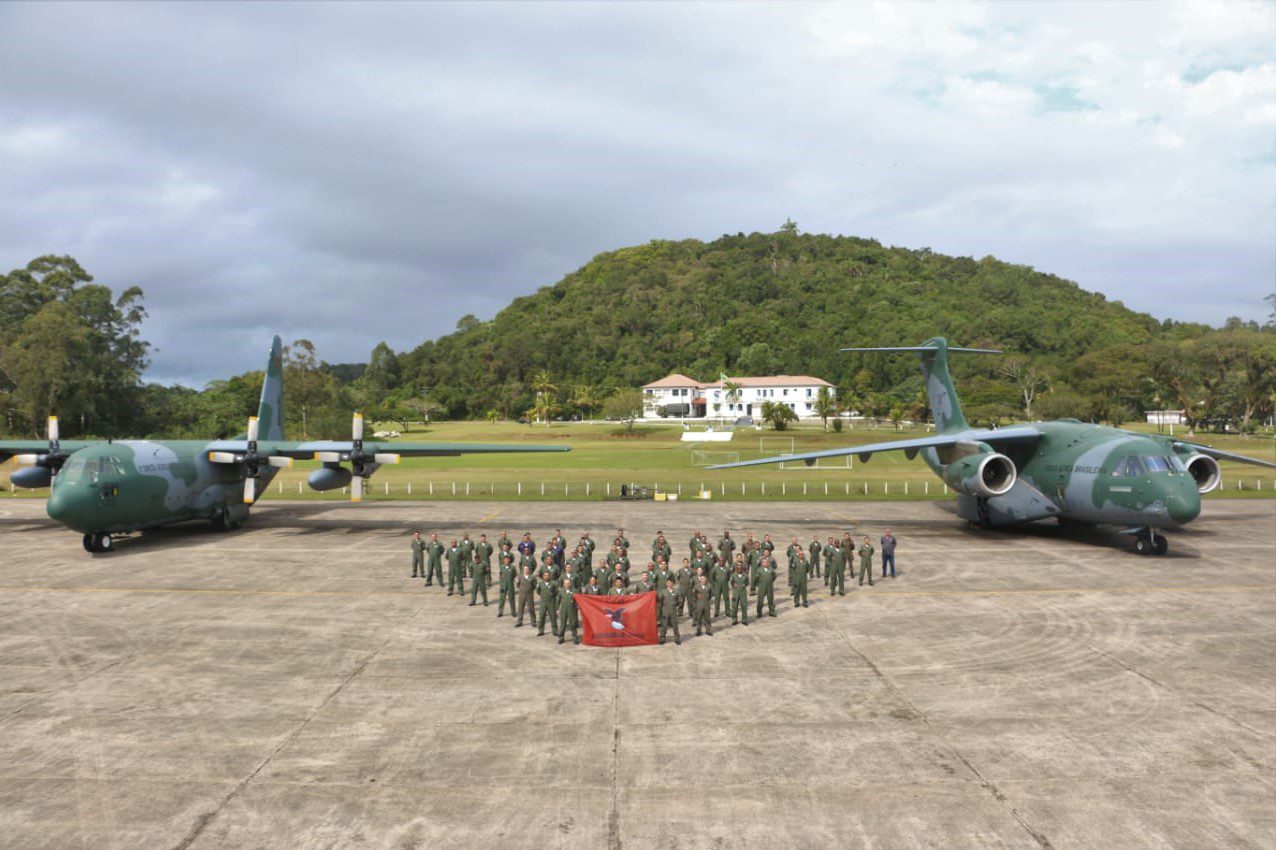C-130 Hercules and KC-390 Millennium aircraft were used for the crew’s operational training.
Air Force Agency: 1st/1st GT, by Lieutenant Peres
Between August 8 and 17, the First Squadron of the First Transport Group (1º/1º GT) – Gordo Squadron, carried out the Aeronautical Search and Rescue Technical Exercise (EXTEC-SAR), with the C-130 Hercules and KC-390 Millennium aircraft, at Florianópolis Air Base (BAFL). The two aircraft were used for the operational training of crew members.
The Gordo Squadron Commander, Lieutenant Colonel Umile Coelho Rende, spoke about the importance of the training. “It was an excellent opportunity for the Air Unit, in which we carried out operational training for the crew of the FAB’s new vector, based on the experience acquired over the years with the crew of the C-130 Hercules. The participation of both aircraft in this exercise added logistical and operational knowledge, allowing us to develop the tactics, techniques and procedures needed to maintain the efficiency and operational readiness that are characteristic of our Squadron,” he explained.

The Exercise Director and Commander of Galeão Air Base (BAGL), Colonel Fábio Ferreira Silva, spoke about the activity. “In addition to operational development, the SAR Technical Exercise enabled us to identify the capacity of BAGL’s logistical resources, allowing us to improve the Air Unit’s operational readiness to comply with International Search and Rescue Agreements,” he said.
A total of 33 hours were flown over the ten days of the exercise, when it was possible to revalidate the training of the C-130 project crews and train five complete crews on the new KC-390 Millennium vector in search and resupply capabilities in land and sea environments, by means of aerial launches of survival kits, thus maintaining the readiness rates of the 1st/1st GT adequate for Search and Rescue service.

In addition to visual search capabilities, the training included electronic search using tactical radar, as well as electro-optical and infrared capabilities using the Litening III pod – equipment that has high-resolution cameras to improve identification and visualization capabilities. In SAR missions, the cameras can be used to identify the site of a plane crash, a shipwreck or other situations. Litening’s laser can be used to acquire coordinates, mark and designate targets. The data obtained would be passed on to rescue helicopters, speeding up the rescue of a victim.
Photos: 1º/1º GT
